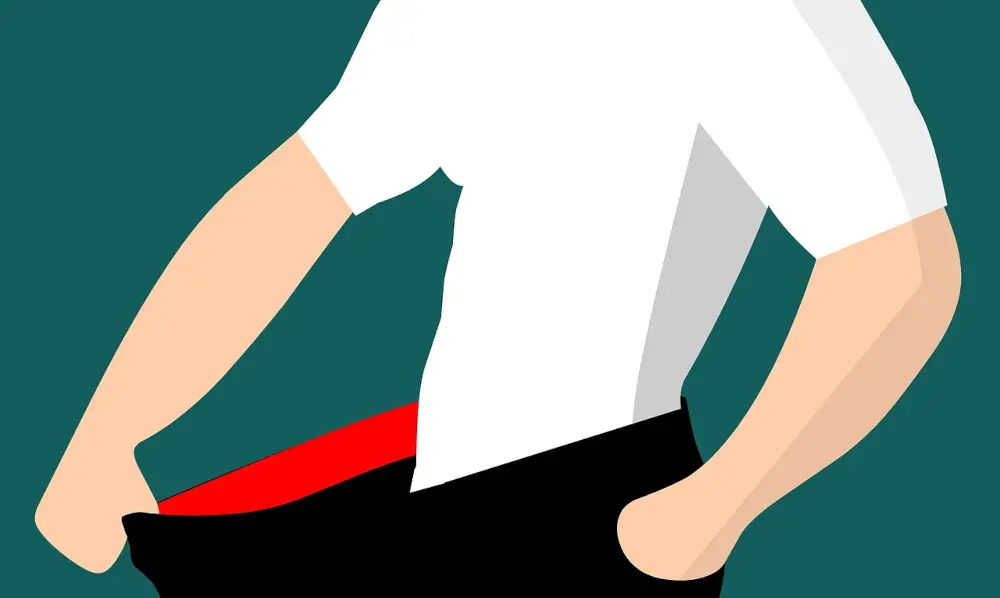I still remember the first time I ended an extended fast incorrectly.
After completing a challenging 7-day water fast, I was so eager to eat that I immediately dove into a huge stack of my wife’s freshly fried chicken. I hurriedly ate about five or six pieces within 10 minutes!
Let’s just say I regretted that decision pretty quickly. Within 30 minutes, I was sitting on the toilet seat yelling, crying, and begging God for mercy from the intense stomach pains.
Thankfully I didn’t experience any permanent damage, but I learned my lesson. Ending a fast properly is just as important as the fasting itself.
After abstaining from food for an extended time, your body needs to be reintroduced to food slowly and carefully to avoid digestive issues, intense food cravings, potential nutrient deficiencies, blood sugar spikes, and more.
In this post, you’ll learn everything you need to know about safely ending a fast while maximizing the spiritual, mental, and physical benefits.
Considerations After an Extended Fast

1. Your Stomach’s Reduced Capacity
After abstaining from food for days or weeks, your stomach shrinks significantly. By the end of a long fast, your stomach’s capacity for food is only a small fraction of what it once was.
Eating too much food after fasting can lead to intense bloating, nausea, and stomach pain since your digestive system simply can’t handle large food volumes after a fast.
2. Sleepy Digestive Organs
In addition to a shrunken stomach, many of your digestive organs and processes essentially “sleep” during an extended fast since there’s no food to digest.
Enzyme production, bile production, and gastrointestinal motility all begin to slow down.
When you suddenly overload your digestive system after fasting, it essentially gets thrown into shock trying to ramp all these resting processes back up to digest the food.
This shock can cause issues like diarrhea, intense food cravings, and disrupted blood sugar.
2. The Danger of Refeeding Syndrome
Refeeding syndrome refers to metabolic disturbances and potential nutrient deficiencies that occur when resuming feeding after a long fast or period of malnutrition.
Consuming too many carbohydrates and fats too quickly after a long period of fasting can cause dangerously low electrolyte levels in the blood, organ damage, heart arrhythmia, and even death in severe cases.
Break Your Fast Safely – Gradual Resumption of Eating

The longer your fast duration, the more gradually you need to exit it.
Rather than diving right back into full, hearty meals after fasting, you need to slowly rewake your sleeping digestive system so it can adjust back to processing food again.
Here are some general timelines:
- 1-3 day fast: Break the fast over 1 day.
- 5-14 day fast: Break the fast over 3 days.
- 15-30 day fast: Break the fast over 5-7 days.
- 40+ day fast: Break the fast over at least 10 days.
Playing it slow allows your body to gradually reactivate digestive juices and enzymes so you can transition gently back to a normal diet.
Never Break a Fast With a Large Meal

Regardless of your exact fast duration, you should never break an extended fast with a large, heavy meal.
Foods like bread, dairy products, eggs, nuts, meat, and other fatty or processed items take a ton of digestive effort to break down.
After fasting for so long, your body simply can’t handle the digestion required for those hearty foods right away.
Instead, breaking your fast with these foods is essentially like throwing your resting digestive organs into shock.
This shock can cause consequences ranging from intense cravings and diarrhea to stomach ulcerations, inflammation, and dangerous disruptions of your electrolyte balance.
Gentle Transition Back to Eating

So if you can’t break a fast with a hearty sandwich or omelet like you may be craving, what can you eat?
Here’s a step-by-step overview:
1. Sip on Broth
For the first day or two after a longer fast, stick only to sipping small amounts of warm, salty broth.
Bone broth and chicken broth are excellent options. They provide some minerals that may be depleted after fasting without overloading your digestive organs.
Avoid adding cream or oil to your broth during the refeeding process, as a high fat intake right away can shock your system.
2. Try Easy-to-Digest Foods
After a day or so of warm broth, you can start incorporating other fast-breaking foods like cooked non-starchy veggies, ripe fruits, potatoes, rice, quinoa, yogurt, and cottage cheese.
These foods provide nutrients to help restore your energy levels and electrolyte balance, while still being gentle on your digestive system after fasting.
3. Slowly Reintroduce Heartier Foods
Over the next several days after ending your fast, you can begin slowly reintroducing small portions of heavier foods like eggs, legumes, sprouted bread, cooked fish and chicken, and soups made with legumes and veggies.
Pay attention to your body’s signals as you reintroduce new foods.
If you start experiencing intense cravings, diarrhea, headaches, fatigue, or other symptoms, it’s a sign to pull back and give your body more time.
4. Return to Normal Eating Patterns
Once you’ve spent at least 3-7 days gently reawakening your digestive organs, you can start to return to a more normal diet.
But even now, it’s important not to overeat or dive right back into unhealthy eating patterns.
As you continue transitioning off the fast, emphasize whole, freshly prepared foods like fruits, veggies, whole grains, nuts, seeds, eggs, lean protein, herbs, and spices. These nourish your body without overloading your system after fasting.
Pay attention to serving sizes too. Your stomach shrinks after fasting, so you’ll feel satisfied by smaller portions than you did before fasting.
Best Foods to Break a Fast Safely

Here’s a quick overview of some of the best drinks and certain foods to eat after fasting:
- Bone broth.
- Chicken broth.
- Cooked non-starchy vegetables.
- Avocados.
- Berries.
- Apple sauce.
- Sauerkraut and pickled veggies.
- Cooked potatoes or sweet potatoes
- Oatmeal.
- Cooked rice.
- Nutritional yeast.
- Yogurt.
- Cottage cheese.
- Eggs.
- Soups with veggies & legumes.
- Cooked fish.
- Herbal tea.
- Diluted fruit juice.
- Coconut water.
Focus on warm, soothing foods and liquids in the initial refeeding days, and emphasize gentler foods like fruits and veggies as you slowly work your way back up to a normal diet.
What Not to Eat Right After Fasting

Just as important as knowing what to eat is knowing what not to eat when breaking your fast.
Here are some major food categories to avoid immediately after fasting:
- Sugary foods: Candy, cookies, cakes, muffins, ice cream, and sugary cereals. These can cause blood sugar spikes and crashes.
- Refined carbs: White bread, bagels, pasta, or other refined grains. These break down quickly into blood sugar.
- Fried foods: French fries, donuts, fried chicken, etc. These are very hard to digest.
- Fatty cuts of meat: Ribeyes, bacon, sausage, etc. Very challenging to digest after fasting.
- Raw veggies: Raw salads and veggies are too rough on your digestive lining after fasting. Cook them instead.
- Excess fruits and fruit juice: While small amounts of ripe fruit or diluted juice are fine, too much sugar from fruit can shock your system.
- Coffee, and energy drinks: These overstimulate your adrenals which may already be depleted after fasting. Herbal tea is a better choice.
- Alcohol: This is never advisable immediately after fasting since alcohol is toxic and dehydrating.
By avoiding these foods and drinks as you break your fast, you set yourself up for safe and gradual refeeding without shocking your body.
8 Tips for Safely Ending a Fast

Here are some key tips to keep in mind:
- Break your fast gradually over several days, not all at once with a big meal. Follow the timelines and eat slowly based on your fast duration.
- Start with broth and salty fluids to replenish electrolytes before adding in gentle foods.
- Choose warm, cooked foods that are easy to digest at first.
- Reintroduce new foods slowly while paying attention to your body’s signals.
- Avoid sugary foods and drinks, greasy/fried items, raw produce, excessive fruit juice, and other hard-to-digest items during the refeeding process.
- Emphasize gently cooked fruits, vegetables, omega-3s, and lean proteins as you transition back to a normal diet in the days after ending your fast.
- Consider continuing intermittent fasting by including one or two 24-hour fasts per week, even after ending your extended fast. This helps ease the transition.
- Stay hydrated and balance electrolytes like sodium, potassium, and magnesium in the weeks after fasting to support your body.
Spiritual Benefits of Ending a Fast Wisely

When you take the proper time and care to break an extended fast gradually, you continue honoring your physical body as the temple of the Holy Spirit.
“19 Or do you not know that your body is the temple of the Holy Spirit who is in you, whom you have from God, and you are not your own? 20 For you were bought at a price; therefore glorify God in your body and in your spirit, which are God’s.”
1 Corinthians 6:19-20 (NKJV)
biblegateway.com
Making wise food choices while coming off your spiritual fast is just as much an act of devotion as the fasting itself.
Rushing back into unhealthy eating or falling into food addiction and gluttony after fasting essentially erases the many spiritual and physical benefits of fasting you worked so hard to gain.
By refeeding your body gradually while staying centered in prayer and contemplation, you integrate the fruits of fasting into your spirit so their effects last well beyond the fasting period.
In Conclusion
Ending an extended fast properly lays the foundation for lasting spiritual, mental, and physical transformation. But ending your fast incorrectly essentially erases all your hard work and discipline, while potentially causing serious harm.
By reintroducing food mindfully and gradually over several days, you honor your body’s fragile, fasting state while giving your digestive organs ample time to “wake up” again.
Stick to warm broths and easily digested foods at first, while staying rooted in prayer and scripture study as you make the transition.
With this slow, intentional approach, you continue fasting’s benefits rather than sabotaging them by shocking your body with excess food or unhealthy substances too soon after such a long denial.
Pay attention to your body’s signals, emphasize whole plant foods and lean proteins, stay active, and continue intermittently fasting for 1-2 days weekly even after ending your extended fast.
The diligence and self-control demanded to break your fast safely offer beautiful lessons that integrate into your spirit beyond the fasting period itself.
By taking great care to transition wisely back to eating, you grow deeper into the life of patience, moderation, and temperance that fasting invites.
Frequently Asked Questions
Q. How long should you break a 3-day fast?
A. Break a 3-day fast over about 1 day. On day 1, sip broth and fluids. On day 2, add in some gently cooked foods like rice or non-starchy vegetables. By day 3, return to a normal diet but avoid overeating.
Q. What is the best thing to eat after a week of fasting?
A. Warm bone broth is the best way to break a 1 week fast, along with electrolyte sources like coconut water.
Over the next 2 days, gradually add cooked veggies, fruits, yogurt, rice, potatoes, and oats. Then slowly reintroduce lean proteins and good fats.
Q. Can I break my fast with eggs?
A. It’s best not to break a long fast with eggs, since they can be difficult to digest initially.
Have some bone broth and fluids first before adding eggs 2-3 days into the refeeding process.
Then eat just 1-2 boiled or poached eggs at a time rather than diving into a huge omelet on an empty stomach.
Q. What happens if you break a fast wrong?
A. Consequences of breaking a fast incorrectly include intense food cravings, diarrhea and digestive issues, headaches, blood sugar disruptions, hypoglycemia, dehydration, malnutrition, refeeding syndrome, and even potential death in severe cases.
Break your fast gradually!
Q. How do you not gain weight after ending a fast?
A. To avoid gaining weight after extended fasting, break your fast slowly. Do not binge. Emphasize lean proteins, fruits/veggies, and high-fiber whole grains.
Stay hydrated, balance electrolytes, and consider continuing intermittent fasting for 1-2 days weekly even after ending your fast.






